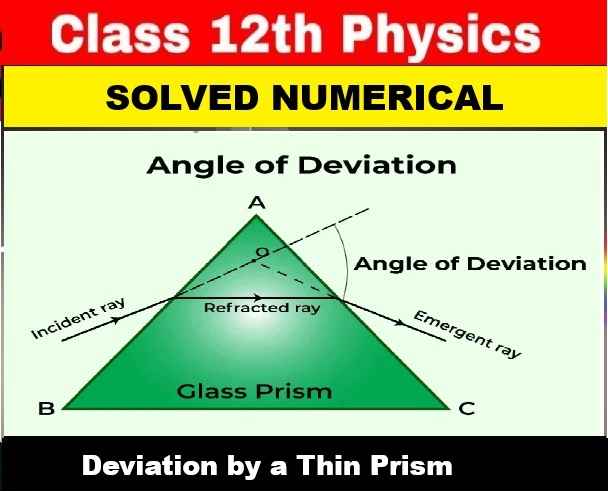Measurements and Experimentation Exe-1A Very Short Answer Physics Class-9 ICSE Selina Publishers Solutions Chapter-1. Step By Step ICSE Selina Concise Solutions of Chapter-1 Measurements and Experimentation with Exercise-1(A), Exercise-1(B) and Exercise-1(C) including Very Short Answer Type, Short Answer Type, Long Answer Type and Numerical Questions Solved . Visit official Website CISCE for detail information about ICSE Board Class-9.
Measurements and Experimentation Exe-1A Very Short Answer Physics Class-9 ICSE Concise Selina Publishers
| Board | ICSE |
| Publications | Selina Publication |
| Subject | Physics |
| Class | 9th |
| Chapter-1 | Measurements and Experimentation |
| Book Name | Concise |
| Topics | Solution of Exe-1(A) Very Short Answer Type |
| Academic Session | 2025-2026 |
Measurements and Experimentation Physics Class-9 ICSE Concise Chapter-1
Note :- Before Viewing Selina Concise Physics Solutions of Chapter-1 Measurements and Experimentation Class-9 . Read the whole chapter carefully and Solved all example with Numerical s of Exercise-1 Measurements and Experimentation Class-9.
Important Point for Measurement and Experimentation
International system of unit in . Other commonly used system of unit- FPS and CGS ,Measurement using common instrument Vernier caliper , Micrometer and screw gauge for length and simple pendulum for time .
Measurement of length using vernier caliper and micrometer screw gauge . least count leads count least to an increasing an accuracy least count in Measurement and Experimentation , Vernier caliper Screw gauge in Measurement and Experimentation.
Exe-1(A) Very Short Answer Type
Measurements and Experimentation Class-9 Physics Solutions
Page 10.
Que-1: What is meant by measurement?
Ans: Measurement is the process of comparing a given physical quantity with a known standard quantity of the same nature.
Que-2: What do you understand by the term unit?
Ans: Unit is a quantity of constant magnitude which is used to measure the magnitudes of other quantities of the same manner.
Que-3: How is a physical quantity expressed?
Ans: A physical quantity is expressed in terms of the following parameters:
- The unit in which the quantity is being measured, and
- The numerical value which expresses, how many times the above selected unit is contained in the given quantity.
Hence, the magnitude of physical quantity is expressed as : Physical quantity = (numerical value) x (unit)
Que-4: Name the three fundamental quantities.
Ans: S.I. unit of length (m): A metre was originally defined in 1889 as the distance between two marks drawn on a platinum-iridium (an alloy made of 90% platinum and 10% iridium) rod kept at 0°C in the International Bureau of Weights and Measures at serves near Paris.
and S.I. unit of mass (kg): In 1889, one kilogramme was defined as the mass of a cylindrical piece of a platinum-iridium alloy kept at International Bureau of Weights and Measures at serves near Paris.
while S.I. unit of time (s): A second is defined as 1/86400th part of a mean solar day, i.e.
w1 s = 1/86400 × one mean solar day.
Question 5. What is the S.I. unit of Luminous intensity?
Ans: The S.I. unit of Luminous intensity is candela (cd).
Que-6: Define one parsec.
Ans: One parsec is the distance from where the semi major axis of orbit of earth (1 A.U.) subtends an angle of one second.
Que-7: Define a fundamental unit.
Ans: A fundamental unit is that which is independent of any other unit or which can neither be changed nor can be related to any other fundamental unit.
Example – Units of mass, length etc.
Que-8: Define a derived unit.
Ans: Derived units are those which depend on the fundamental units or which can be expressed in terms of fundamental units.
Que-9: Define standard metre.
Ans: A metre was originally defined in 1889 as the distance between two marks drawn on a platinum-iridium (an alloy with 90% platinum and 10% iridium) rod kept at 0oC in the International Bureau of Weights and Measures at serves near Paris.
Que-10: How is nanometer related to Angstrom ?
Ans: Relation between nanometer (nm) and Angstrom (Å) is expressed as:
1 nanometer = 10 Å
Que-11: Complete the following —
(a) 1 light year = ________ m
(b) 1 m = ________ Å
(c) 1 m = ________ µ
(d) 1 micron = ________ Å
(e) 1 fermi = ________ m
Ans:
(a) 1 light year = 46 x 1015m
(b) 1 m = 1010Å
(c) 1 m = 106µ
(d) 1 micron = 104Å
(e) 1 fermi = 10-15m
Que-12: Complete the following —
(a) 1g = ______kg
(b) 1mg = ________kg
(c) 1 quintal = ________kg
(d) 1 a.m.u (or u) = ________kg
Ans:
(a) 1 g = 10-3 kg
(b) 1 mg = 10-6 kg
(c) 1 quintal = 100 kg
(d) 1 a.m.u (or u) = 1.66 x 10-27 kg
Que-13: What is a leap year?
Ans: A leap year is the year in which the month of February is of 29 days.
1 Leap year = 366 days
Que-14: The year 2020 will have February of 29 days’. Is this statement true?
Ans: Yes, the given statement is true.
Que-15: What is a lunar month?
Ans: One lunar month is the time in which the moon completes one revolution around the earth. A lunar month is made of nearly 4 weeks
Que-16: Complete the following
(a) 1 nanosecond =………s.
(b) 1 µs =………s.
(c) 1 mean solar day =………s.
(d) 1 year = ………s
Ans:
(a) 1 nanosecond = 10-9 s
(b) 1 µs = 10-6 s
(c) 1 mean solar day = 86400 s
(d) 1 year = 3.15 × 107 s
Que-17: Name the physical quantities which are measured in the following units:
(a) u
(b) ly
(c) ns
(d) nm
Ans:
(a) Mass
(b) Distance (or length)
(c) Time
(d) Length
Question 18. Write the derived units of the following
(a) Speed
(b) Force
(c) Work
(d) Pressure.
Ans:
(a) ms-1
(b) kg ms-2
(c) kg m2s-2
(d) kg m-1s-2
Ques-19: How are the following derived units related to the fundamental units?
(a) Newton
(b) Watt
(c) Joule
(d) Pascal.
Ans:
(a) kg ms-2
(b) kg m2s-3
(c) kg m2s-2
(d) kg m-1s-2
Que-20: Name the physical quantities related to the following units:
(a) km2
(b) Newton
(c) Joule
(d) Pascal
(e) Watt
Ans:
(a) Area
(b) Force
(c) Energy
(d) Pressure
(f) Power
— : End of Measurements and Experimentation Exe-1A Very Short Answer Class-9 ICSE Physics Solutions :–
Return to Concise Selina Physics ICSE Class-9 Solutions
Thanks
Please share with your friends


